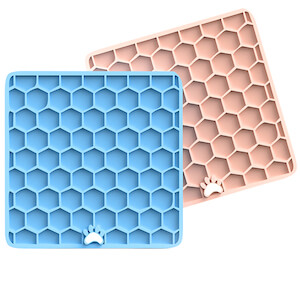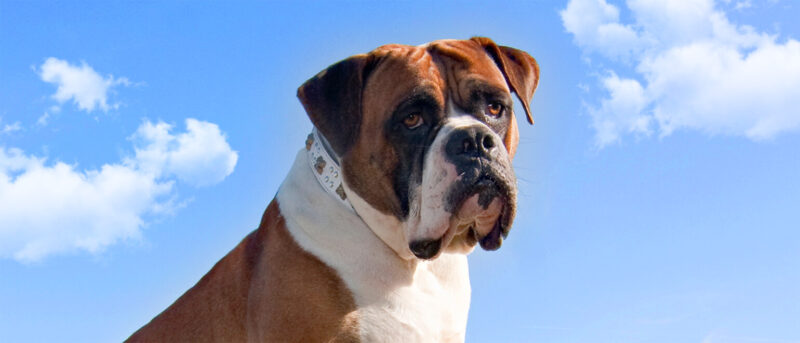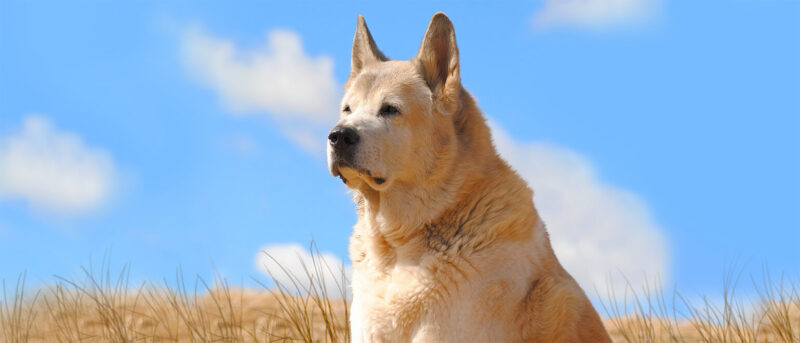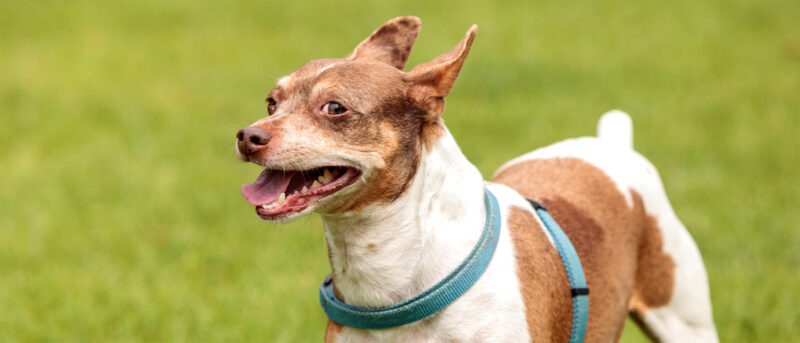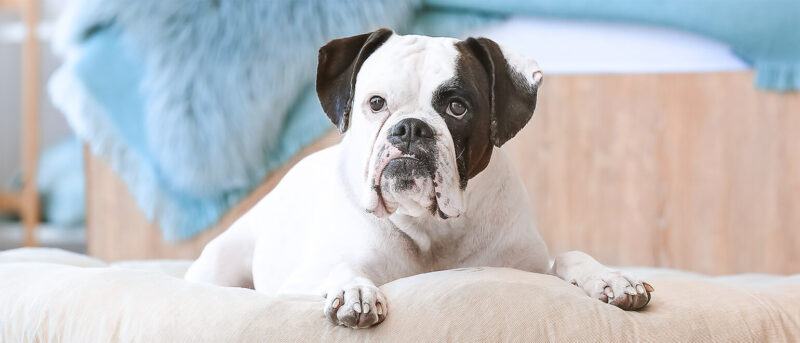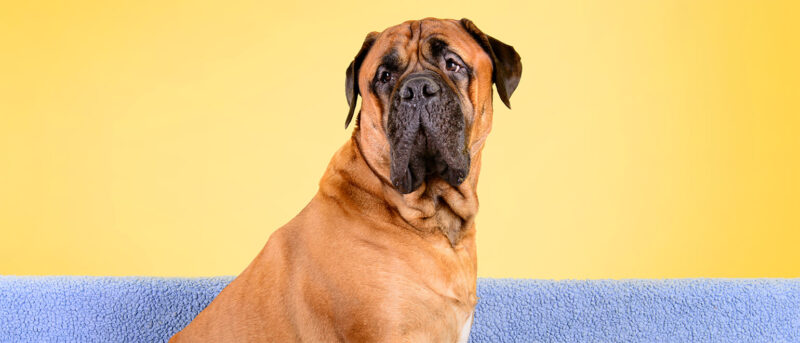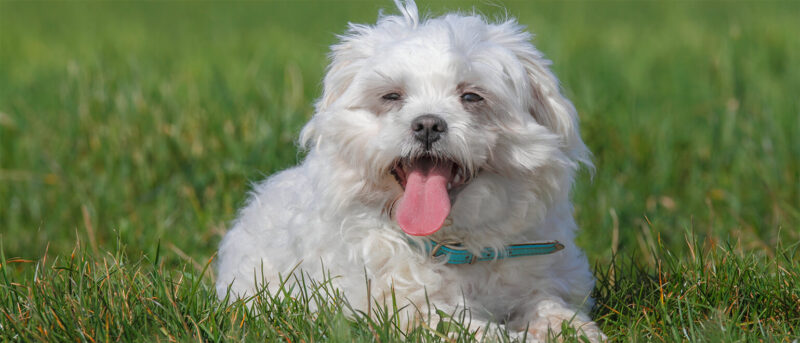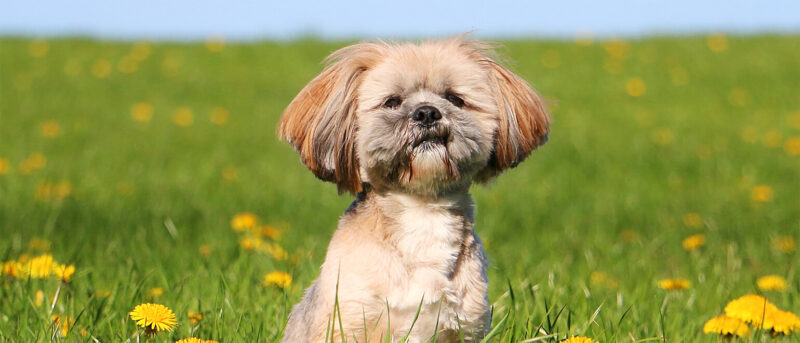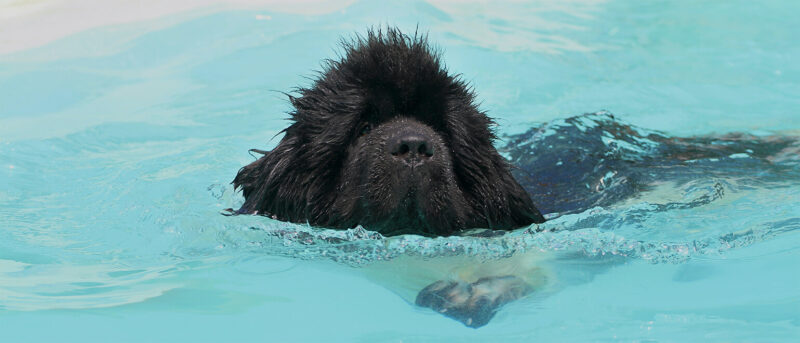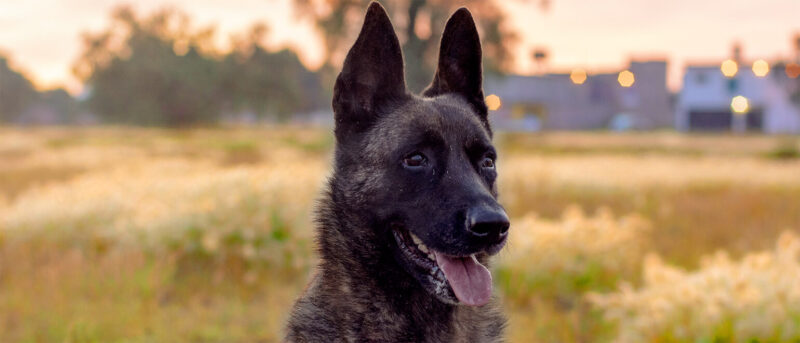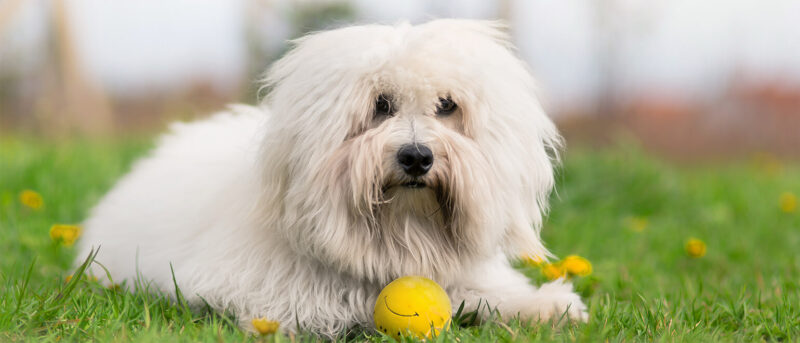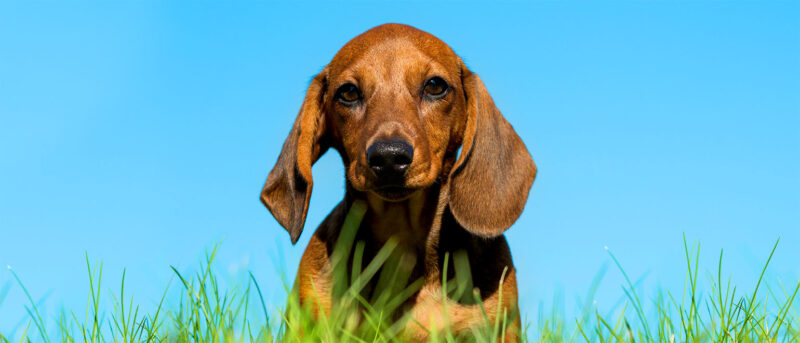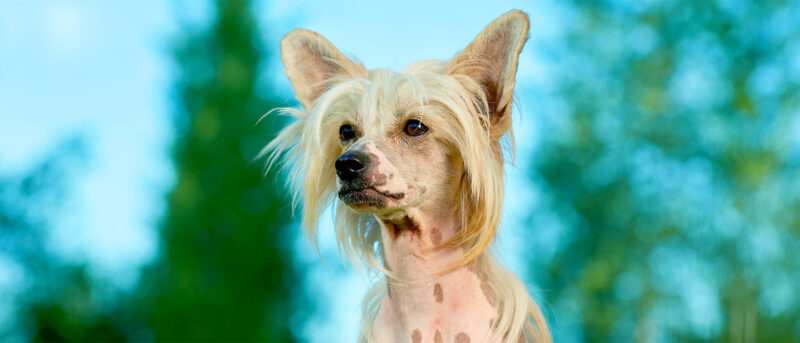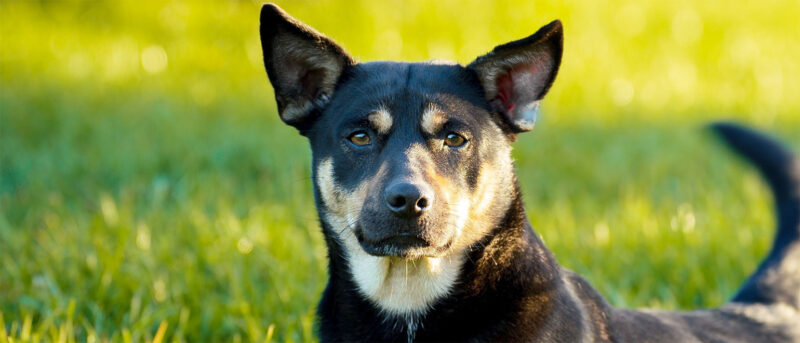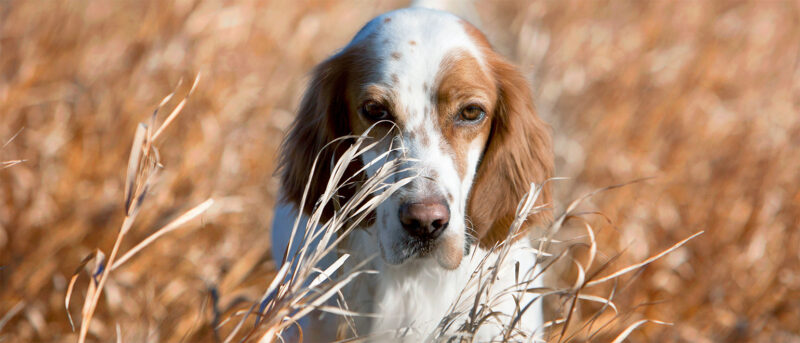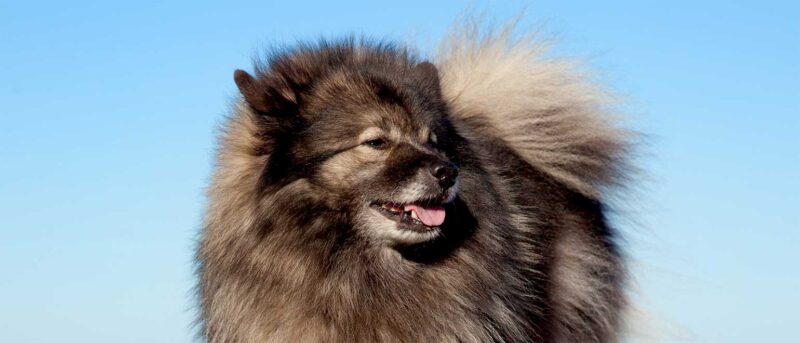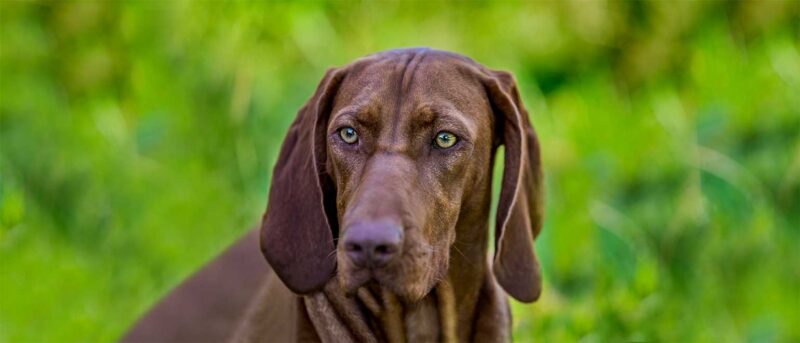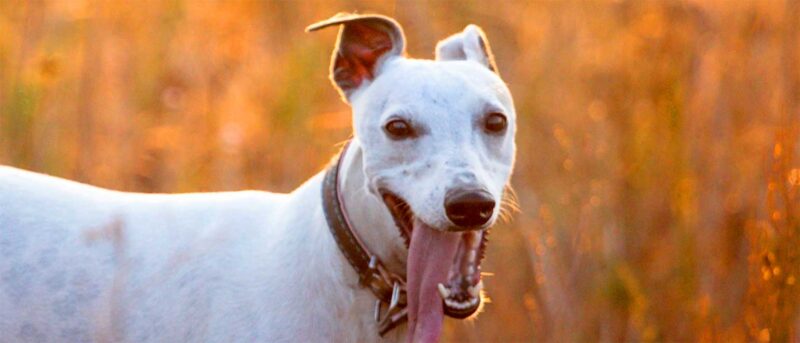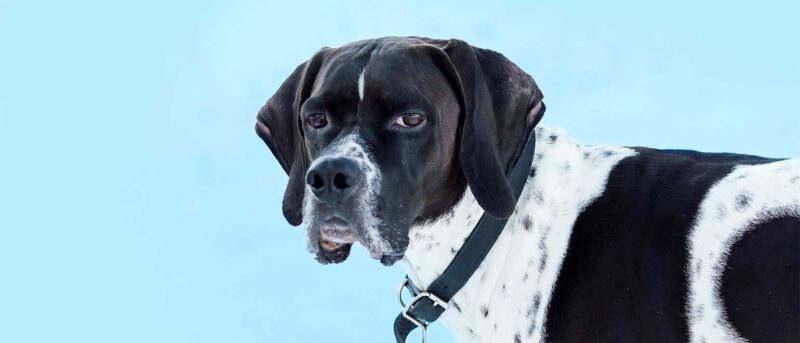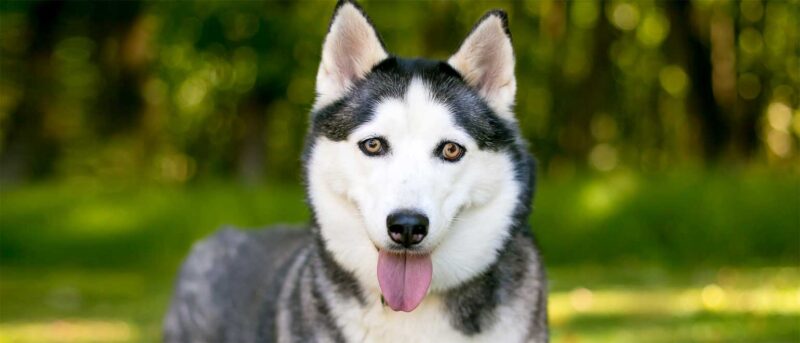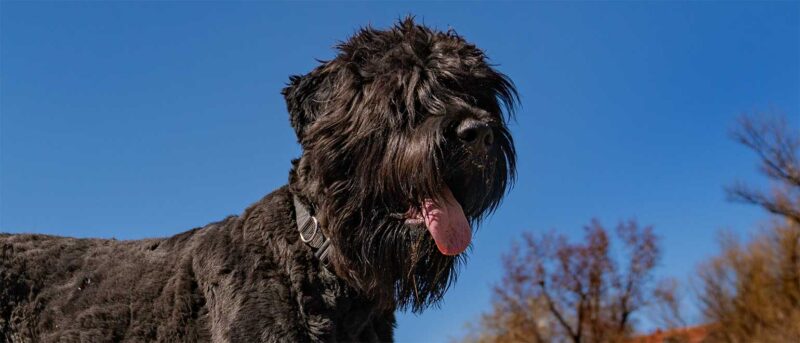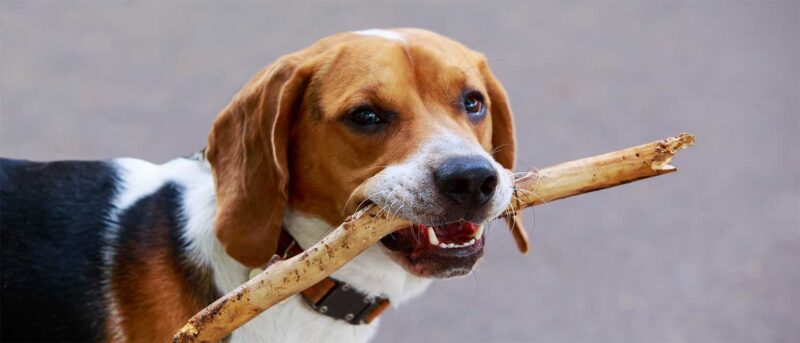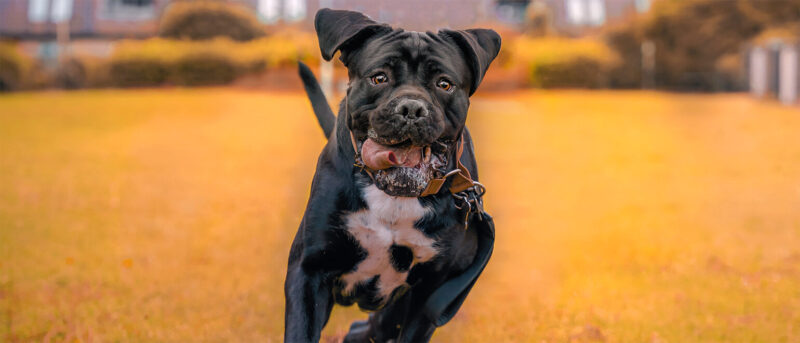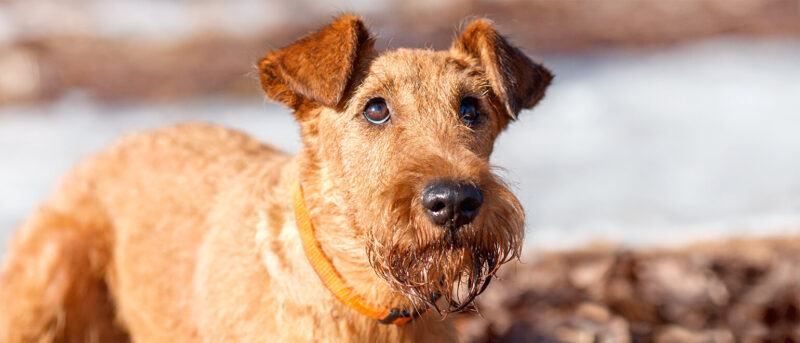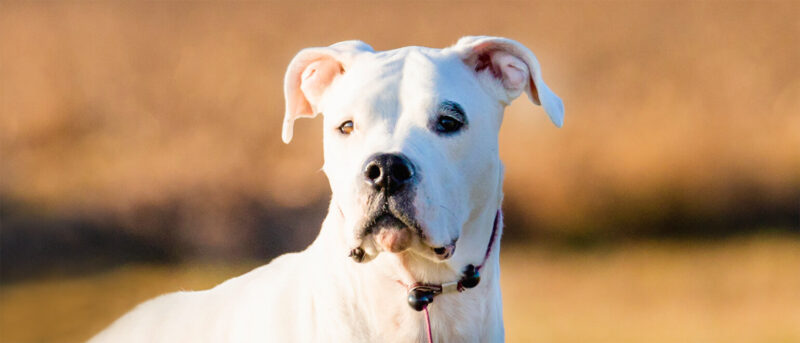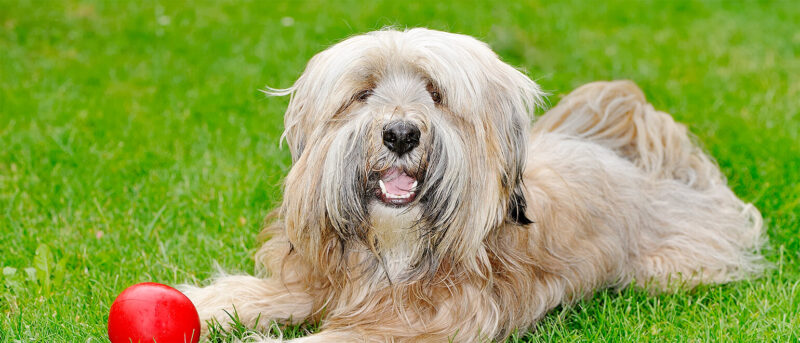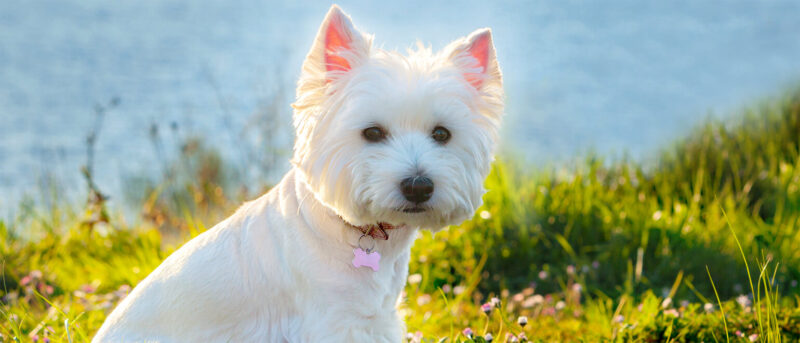Border Terrier: Breed Guide For the Small Dog With Big Personality
The lively and energetic Border Terrier has many admirers who appreciate the breed’s tough and hard-working nature. These spirited, affectionate, and cheerful dogs are popular pets and make ideal city or countryside companions. These dogs can be ‘hard as nails’ while working and friendly and loving when off the clock. Originally developed by breeders to […]
The lively and energetic Border Terrier has many admirers who appreciate the breed’s tough and hard-working nature. These spirited, affectionate, and cheerful dogs are popular pets and make ideal city or countryside companions. These dogs can be ‘hard as nails’ while working and friendly and loving when off the clock.
Originally developed by breeders to thrive in the countryside, these adaptable dogs also do well in the city, as long as they get plenty of exercise and playtime. The Border enjoys exploring the great outdoors and making playmates with puppies at the local dog park. While Borders are friendly and typically get along with other dogs, their innate hunting instincts might get the better of them when a cat or squirrel crosses their path. To learn more about this pint-sized dog breed, just read below!
Border Terrier Physical Characteristics
Border Terriers have signature physical features that set them apart from other breeds, including a unique otter-shaped head, the result of their broad skull, and a short, dark-colored muzzle.
The Border Terrier typically sports a rough, short coat in shades of red, blue, tan, wheaten, or grizzle and tan. They have small, alert eyes that sparkle with a playful gleam. They also have folded ears that resemble the letter “V”, while their small black noses often match the color of their ears.
With just a few short whiskers on its muzzle, the Border Terrier boasts powerful teeth and a formidable bite. Their tails are wide at the base and comparatively shorter in length compared to other dogs of the same size.
Border Terrier Dog Breed Size
Border Terriers were purposefully developed to be small enough to squeeze into small spaces, but large enough to keep up with horse-riding hunters. Males can range in weight from 13 to 15.5 pounds, while females generally weigh between 11.5 and 14 pounds. These small dog breed terriers reach a height of 10 to 11 inches.
Generally, Borders have a well-formed medium build with slight narrow shoulders. These medium-boned terriers are energetic, athletic, and built for endurance and agility.
Border Terrier Personality
Border Terriers are known for their pleasant nature, obedience, affection, and relative ease of training, especially compared to other terriers. Their keen intelligence helps them to swiftly understand cues and patterns that signal mealtime, when it’s time to go for a walk, and when you’re preparing to leave for the office.
While this breed is loving and cuddly to its owner, they do not show the same affection to other small animals. Due to their ancestry as fox-hunting hounds, these dogs will relentlessly and fearlessly run down prey, even if you don’t keep them as hunting dogs. They are capable of chasing, attacking, and even killing squirrels, cats, and other small animals. You can teach them to ignore these instincts with training.
Due to their tendency to chase, it’s best to ensure that your yard has a secure fence. Do not let your Border off leash in areas that are unfenced.
As is suggested with every dog, it’s important to give your Border Terrier early socialization when they’re young. Being around different people, environments, sounds, and experiences will help your Border Terrier pup grow into a well-rounded adult dog.
Border Terrier Dog Breed Exercise
Terriers are dynamic diggers, so your backyard fencing should extend at least 18 inches underground. While it’s impossible to completely curtail their digging instinct, you can give your pup a specific place of their own to dig. You can also give them needed mental stimulation by putting their drive to work with a variety of fun games! Border Terriers excel in canine sports like flyball and participating in activities like lure coursing, earth dog competitions, and tracking.
Your Border will need at least 30 minutes of exercise a day. You can meet this exercise requirement with a good game of fetch, off-leash play (in a fenced-in area, of course), or a walk around the neighborhood (on a leash). Without proper exercise, Border Terriers are prone to boredom and excessive weight gain. Boredom can lead to lots of barking, and destructive behaviors in the home.
Border Terrier Training
Training a Border Terrier requires a gentle approach, as they are sensitive souls who don’t respond well to harsh methods. Negative training techniques can easily crush their sweet spirit. To effectively train your Border Terrier, seek out a trainer who has experience with the terrier mentality. Positive reinforcement methods, such as using food rewards, dog treats, play, and praise, are highly effective with this gentle yet hard-working breed.
Even though Border Terriers are quick to pick up on house rules and essential dog etiquette such as greeting people, walking on a leash, and house training, they might continue the habit of excitedly jumping up to greet people.
House Training
As long as they’re given ample opportunity to use the bathroom outside and have a consistent schedule, Border Terriers are typically easy to house-train. Like many dog breeds, Border Terriers enjoy chewing on things. To avoid expensive furniture replacements and unnecessary vet bills, it’s best to provide them with a ton of chew toys.
To prevent your Border Terrier from chewing up your entire house while you’re away, you may want to prioritize crate training. It’s important for dog parents of every breed to understand that a crate is a tool, not a punishment measure. Avoid keeping your Border locked in their crate for long periods of time. The best place for your pup to be is by your side!
Leash training is essential for Border Terriers, as their remarkable speed in pursuing prey can be both impressive and worrisome. Their innate drive to chase after prey doesn’t diminish with age; in fact, many Border Terrier parents find it becomes even stronger over time.
Border Terrier Dog Breed History
The Border Terrier traces its roots back to the northeastern region of England during the 18th century, close to the border with Scotland. This breed emerged from the timeless conflict between foxes and farmers.
Breeders aimed to make the Border Terrier flexible and slender with legs long enough to keep pace with horses during a fox hunt. These proportions support the dog’s ability to maneuver through tight spaces, flushing foxes from their lairs. Endowed with ample stamina, this breed also has thick, resilient skin that makes it hard for their foxy arch-enemies to pierce with their teeth. Their coat is also very weather-resistant.
While the Border Terrier was highly valued by the people of Scotland for its unwavering resolve and bold demeanor, this breed remained relatively obscure outside the UK. Spectators in the UK often encountered the Border Terrier at agricultural exhibitions across Northumberland during the late 19th century.
Despite its ample charms, the Border Terrier received scant attention from dog enthusiasts until the early 20th century. The breed gained official recognition from England’s Kennel Club in 1920, prompting the formation of a dedicated breed club. Later, in 1930, a remarkable hound named Netherbyers Ricky achieved the distinction of becoming the first Border Terrier registered in the United States.
Common Health Problems Found in Border Terriers
The Border Terrier is generally a healthy breed, they can be prone to specific health issues. Responsible breeders will prioritize screening their breeding stock for conditions like allergies, juvenile cataracts, heart problems, and hip dysplasia. Additionally, some Border Terriers may struggle with heat intolerance, so it’s advisable to limit outdoor activities when temperatures exceed 85 degrees Fahrenheit or more.
When purchasing a puppy, make sure you select a good breeder who can provide health clearances for both of the puppy’s parents. Health clearances are official documents confirming that the dogs have been tested for and found free of specific health conditions.
Specifically with Border Terriers, you will want to receive health clearances from both the Orthopedic Foundation for Animals, certifying that their eyes and hips are healthy and normal, and from the Canine Eye Registry (CERF). Several health problems won’t begin to show up until the dog reaches full maturity, and therefore some organizations will not issue health clearances to dogs until they are two years old. Be sure to find a breeder that waits until their dogs are two or three years old before breeding them.
Note: As Border Terriers have a high pain tolerance, sometimes the only detectable sign of sickness for this dog will be when they become unusually quiet or withdrawn.
How to Care for a Border Terrier
Don’t leave your Border Terrier tied up in the backyard, they are family dogs who prefer to live indoors with their family. As any high-energy dog would, they enjoy having access to a backyard. Before letting them run wild, check that your fence is high and secure as the Border Terrier is a master-level escape artist. Borders have a reputation for digging under fences and escaping to the road where they are susceptible to injury as they often lack the street smarts to avoid running into traffic once they escape.
Breeders specifically crafted the Border Terrier as an independent high-energy hunting breed. Historically, this independence was essential as they had to operate at a distance from their handlers during fox hunts. This instinct remains strong in Borders today; while they may heed commands, they often comply on their own timeline.
Nutrition and Feeding for a Border Terrier
When it comes to a Border Terrier’s feeding schedule, we recommend 1 ⅛-1 ⅜ cups of high-quality dog food split evenly into two separate meals daily. The exact amount of food you should give your dog depends on their individual activity level, metabolism, age, and size.
Dogs, like people, have individual dietary requirements. A highly active dog that’s always on the move will need more food than a couch potato. The quality of dog food will also make a significant difference for your pup. Low-quality kibble will require your dog to eat more of it to get an adequate level of nutrition compared to high-quality dog chow.
Keeping your Border Terrier is easy when you feed them a measured amount twice daily rather than letting them self-feed. You can both keep an eye on their physique or check to see if you can feel their ribs to diagnose if your dog is overweight.
How To Tell if Your Border Terrier is Overweight
Since Border Terriers can become overweight easily, it’s critical to give them at least 30 minutes a day of vigorous exercise and to control your Border’s food intake. An easy way to do this is to measure out a full day’s amount of food and place it into a plastic storage container. When it’s time to feed your pup, just give them half of what’s in the container for each meal.
You can easily perform a simple check of your dog’s weight at home. Start by looking down at your dog from above; there should be a visible waistline. If you’re unsure, place your hands on their back, thumbs along the spine, fingers spread downward. You should be able to feel their ribs without pressing too hard. If you can’t feel their ribs, it might be time to adjust their diet and exercise routine.
Coat Color And Grooming
The furry Border Terrier has a dense, short undercoat beneath a wiry topcoat. As previously discussed, they have thick, loose skin, a physical trait that protects them from bites during their fox-hunting days.
The Border Terrier comes in a variety of coat colors, such as blue and tan, full red, wheaten (pale yellow or fawn), or grizzle and tan. Some Borders may sport a small white patch on their chest. To keep your pup looking neat, regular stripping every five to six months and weekly brushing of their rough coat are essential. Your grooming kit should include:
- A fine comb
- A natural bristle brush
- A Stripped Knife (unless you’ve hired a professional dog groomer to handle stripping the coat).
Stripping
Stripping involves the plucking of dead hair by hand or removing it carefully with a stripping knife or other tool. This easy but menial grooming activity can be done while you and your Border watch TV in the living room. Some use a clipper on their coat for easier care, but this may change the color and texture of their coat, making it light, softener, and less weather resistant.
The Border Terrier’s coat requires periodic stripping and weekly brushing to keep it in top condition. Stripping involves removing dead hair by hand using a stripping tool. If you’re unsure how to strip your Border’s coat, your Border’s breeder can likely provide guidance. With a properly stripped and maintained coat, you’ll notice a large reduction in the amount of your Border’s hair found around your home on floors, furniture, and clothing.
More on Coat Care
Their longer coat works to naturally repel dirt. You should be able to keep it decently clean with a groom wipe when necessary and weekly brushing.
Thanks to their coat’s natural dirt resistance, Border Terriers don’t need frequent baths. They typically only require bathing in extreme situations, such as when they splash into a puddle or roll in the dirt. When you do bathe your adorable Border Terrier, opt for a dog shampoo formulated for rough coats to help maintain its texture.
You can also leave their coat as is without stripping or clipping if you like the shaggy aesthetic of your pup’s hair. If you decide to keep your Border’s hair natural, make sure to invest in having a few lint rollers on hand. Their coat will shed more than pups with trimmed coats.
Teeth Care
Regular brushing of your Border Terrier’s teeth a few times a week will help prevent tartar buildup and reduce bacteria. While not mandatory, daily brushing is highly recommended for optimal oral hygiene. After all, there’s no harm in starting the day with clean teeth!
Nail & Paw Care
You should plan on trimming their nails up to twice a month or as needed. When you hear your Border’s nails clicking on the floor, it’s time for a trim. There are many benefits to shorter nails when it comes to the Border Terrier, such as:
- Short nails keep the feet in good condition
- Paws won’t get caught in the carpet which can be painful for your pup
- Your legs won’t get scratched up when your Border Terrier happily jumps up to greet you
We recommend that puppy parents start grooming their Border Pup early so they get comfortable with the process. Many dogs are sensitive about their feet, so regularly handling your pup’s paws can help them relax during the grooming process. Making grooming a positive, reward-filled experience for your dog can make the process much easier. This approach not only keeps your pup looking great but also lays the groundwork for stress-free veterinary exams in adulthood.
Children And Other Pets
Since Border Terriers can effortlessly match a child’s energy all day long, they make perfect companions for kids. That being said, their high energy can make them a little overwhelming for households with children under the age of six. Make sure you supervise your dog around small children just to be sure they don’t unintentionally harm them.
It’s essential to teach children how to approach and interact with your Border Terrier, as with any pet. Supervision is necessary for interactions between dogs and young children to prevent any accidental biting or ear-pulling from either side.
As long as Border Terriers are socialized as puppies, they generally get along with other pet animals. Terriers also tend to thrive when placed in homes with dogs of the opposite sex. Animals like cats, squirrels, and other small wildlife may trigger your Border’s hunting instinct. Also, do not leave your Border alone with any other smaller prey-type animals (birds, rabbits, hamsters, and gerbils) for the other animals’ safety.
Border Terrier Dog Rescue Groups
It’s unfortunate, but sometimes people adopt Border Terriers without fully understanding the responsibilities involved in their care. Consequently, this affectionate and loving breed may find themselves in need of fostering or adoption under the care of rescue groups. Fortunately, there are numerous Border rescue groups online that assist with finding homes, fostering, and addressing other rescue-related needs for dogs in need of assistance.
If the work that goes into raising and training a puppy doesn’t interest you, you may want to consider adopting a Border Terrier. They can be much easier pets as they may have already been through training and the destructive puppy stage. If adopting an adult Border Terrier interests you, a dog rescue is a perfect place to start your pet ownership journey!
Take caution and never trust any pet store or breeder who can’t or won’t provide the dog’s health clearances. It’s also important not to patronize puppy mills as those harmful breeders rarely have healthy dogs and are abusive and neglectful.
More About the Border Terrier
Border Terriers are truly people-oriented dogs and thrive spending time with their human companions. They’re not happy living alone outdoors with minimal interaction; in fact, they can become bored and then exhibit negative behaviors like excessive barking or destructive tendencies if left alone for extended periods. Known for their talents as an escape artist, Border Terriers can find their way out of fenced yards given enough time and opportunity. But with their boundless energy, affectionate nature, and fearless spirit, welcoming a Border Terrier into your life can bring immeasurable joy and years of companionship.







